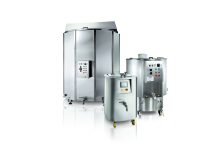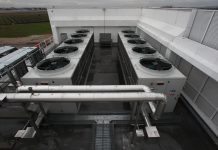
What are the laws of science behind high pressure processing?
The scientific principles underlying HPP are essentially Pascal’s law which describes how pressure applied a fluid distributes itself instantaneously, and the general gas equation, in this case applied to fluids, which due to their compressibility, obey the gas law under these operating conditions. If we then want to describe the biological and chemical laws upon which the entire process is based, well here we are still in the theoretical stages. We can say, however, with certainty that food macromolecules (like proteins, complex carbohydrates and fats) play a fundamental role because of their compressibility. In fact, all these molecules can be compressed in different ways since they possess both “empty spaces” internally as well as solvation volumes according to the solvent present. Compression creates in them a reversible structural variation according to the pressure reached, which then brings about a different functionality. This happens during compression and, at times, can prevail afterwards. This situation, while not modifying the composition of the food, is not compatible with the life of the microorganisms present. This is the pasteurization effect. Furthermore, the pressure generally succeeds in blocking all the chemical reactions that produce higher volume products than reagents. In this way, the process blocks the degradation reactions that result in a cooked effect. Therefore, even though temperatures that potentially initiate the degradation process are reached during the pressurization, these reactions do not occur.
What are the main advantages of HPP?
The main advantages that are known of and exploited today are those of achieving an instantaneous and uniform pasteurization of heat-sensitive foods while at the same time preserving most of their unique organoleptic qualities. It’s possible today to foresee and develop HPP treatments for industrial pasteurization based on the proven mathematical models of thermal pasteurization. At the same time, though available adequate systems in terms of performance and operating cost are not yet available, it is still possible to predict and evaluate processes like High Pressure Assisted Sterilization that today, are not commercially available.

What are the current applications in the food industry?
In the USA for example, the technology has solved for many companies the safety problems in production processes with high Listeria and Salmonella risk. We’re talking here about RTE products, cold cuts, ready-meals, etc. At the same time there is another group of vegetable-based products like juices, smoothies, and vegetable purees, which are considered un-cooked and therefore high quality. Even these, like cheese, milk-based products, fish or fish derivatives, and fruit preparations are quickly taking over the market. HPP can be applied therefore to both solids and liquids. The best results are reached, apart from the “ready to eat” meats, with food that contains water but not gas and that have a good acidity like fruit derivatives. Solid foods are treated when they are already packaged. However, keep in mind that not all packaging can be used in this process. This is the case with paper cartons, glass, aluminium and other metals. The ideal packaging material is a flexible one that can minimize the air contained inside the package. In addition, when it comes to the packaging, the labels and graphics must be water resistant, since HPP treatment involved the full immersion.




I am interested in getting regular feed back on new developments in food processing industries
Comments are closed.